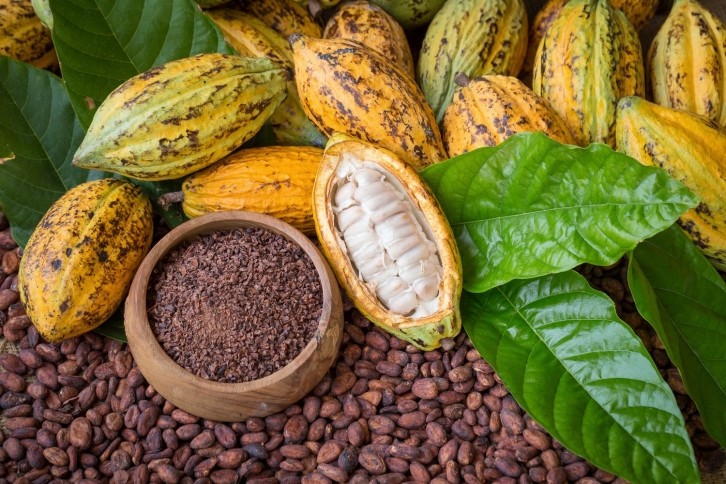Special report
Chocolate companies respond to latest claims of excessive cadmium in cocoa

In a statement, Consumer Reports said: “With the holiday season approaching, many of us will be indulging in a favourite treat: chocolate. Yet despite dark chocolate’s reputation as a healthier sweet, it can also be contaminated with lead and cadmium, two heavy metals linked to serious health problems, as many people learned from Consumer Reports’ testing last year.”
The magazine said 16 of the 48 chocolate products from various makers that its scientists tested recently in seven categories - dark chocolate, milk chocolate, cocoa powder, chocolate chips, and mixes for brownies, chocolate cake, and hot chocolate - contained potentially harmful levels of lead, cadmium or both.
All 48 products contained detectable amounts of the metals, and milk chocolate bars, which have fewer cocoa solids, were the only category that did not contain excess amounts, the report found.
Heavy metals in cocoa
Why is there cadmium in chocolate and cocoa?
Cadmium can be found in chocolate and cocoa due to its presence in tropical soils where crops are cultivated and harvested. Cocoa trees absorb cadmium from soils via their roots and deposit it in the nibs (centre) of cocoa beans.
Why is there lead in chocolate and cocoa?
Lead from many sources, including soil, dust, and deposition from power plants around the world, can adhere to the outer shells of cocoa beans after they are extracted from the pods. When they are harvested, cocoa beans are naturally covered with a sticky cacao pulp which allows lead to cling to the beans while they are being fermented and dried in the open in the tropical countries where cocoa is grown. The shells are removed at the beginning of the chocolate-making process.
As expected, dark chocolates tended to have higher levels of heavy metals and milk chocolate lower. “But every product we tested had detectable amounts of lead and cadmium,” said James E Rogers, PhD, director and acting head of product safety testing at CR. “Sixteen of the 48 products had amounts above CR’s levels of concern for at least one of the heavy metals—in some cases more than twice our limit—but we did find safer options in each category of chocolate products.”
In particular, it calls for Hershey to reduce the amounts of heavy metals contained in its chocolates and is renewing its petition targeting the confectionery giant that more than 75,000 consumers have already signed. Consumer Reports food policy director Brian Ronholm said Hershey, as a “leading and popular brand,” should commit to eliminating “dangerous levels” of heavy metals from its chocolate products, making them safer for consumers.
Hershey has not responded to this latest attack, instead, it is referring all requests for comments to the National Confectioners Association (NCA).
In March this year, it did respond to the allegations directly when, Hershey Chief Financial Officer Steve Voskuil said the company was looking to reduce levels of lead and cadmium, a “naturally occurring” ingredient that could vary based on the cocoa beans’ country of origin. “We would love to eradicate it completely,” he said.
NCA response
NCA spokesperson Christopher Gindlesperger, said: “Chocolate and cocoa are safe to eat and can be enjoyed as treats as they have been for centuries. Food safety and product quality remain our highest priorities and we remain dedicated to being transparent and socially responsible.”
In 2018, The Superior Court of the State of California, San Francisco County granted a motion to ‘The Consent Judgment’ to establish concentration levels for both lead and cadmium for cocoa and chocolate products. Earlier this year, the NCA released As You Sow a three-year study of concentration levels for both lead and cadmium for cocoa and chocolate products.
Gindlesperger said: “The full report and our joint reaction can be found here: https://candyusa.com/news/research-reveals-ways-lead-and-cadmium-in-chocolate-may-be-reduced/”.
Latin America
Latin American cocoa is particularly sensitive to claims of high cadmium levels because of the soil content in many of its growing regions.
Juan Fernando Valenzuela Arango, Director of Purchasing and Agricultural Development operations management at Colombia’s Compañía Nacional de Chocolates, agrees with the NCA’s statement and said South American fine cocoa has been consumed for centuries and is referred to as ‘the drink of the gods’. “Small-holder cocoa farmers are more concerned about their livelihoods and about finding a solution to earning a living income,” he told this publication.
Health guidance
Consumer Reports argues that long-term exposure to the metals can result in nervous system problems, immune system suppression, and kidney damage, with greater danger to pregnant women and young children.
Johns Hopkins Medicine toxicologist Dr. Andrew Stolbach said: "The safety levels for lead and cadmium are set to be very protective, and going above them by a modest amount isn't something to be concerned about. If you make sure that the rest of your diet is good and sufficient in calcium and iron, you protect yourself even more by preventing absorption of some lead and cadmium in your diet."
Dark chocolate is not considered to be a significant source of dietary cadmium by the FDA, as it has not developed specific guidelines with respect to allowable limits for cadmium in chocolate or cocoa, he said.
FCIA
The Fine Chocolate Industry Association said: “As an association with a global membership base, FCIA member companies are held to the food safety and quality standards set out by their relevant jurisdictions to ensure the safety of their products for consumers. In relation to all food categories, dark chocolate has not been identified as a major contributor to cadmium intake. We of course encourage consumers to discuss any specific concerns about their health with their healthcare provider.”
As ConfectioneryNews reported Consumer Reports released its initial findings last December with the revelations that 23 of 28 tested dark chocolate bars contained excessive lead or cadmium, including Hershey products sold under its own brand and the Lily’s and Scharffen Berger brands
Among products found to contain excessive metal content in its latest results were a dark chocolate bar and hot chocolate mix from Walmart, cocoa powder from Hershey’s and Droste, semi-sweet chocolate chips from Target, and hot chocolate mixes from Trader Joe’s, Nestlé and Starbucks.
The Perugina Premium Dark Chocolate bars, owned by Nestlé had the highest amounts. One of the four, Evolved Signature Dark 72% Cacao Chocolate Bar was high in both lead and cadmium. Another bar, Sam’s Choice Dark Chocolate 72% Cocoa, was high in cadmium only.
A Nestlé spokesperson said: “We apply strict standards to ensure our products are high quality and comply with all applicable regulatory requirements, including limits for cadmium and lead.”
And Rick Gusmano, co-founder of Evolved Chocolate, claimed his company’s chocolate products fall well below levels set in the As You Sow settlement and that the company “regularly tests raw materials and finished goods to ensure compliance and, ultimately, consumer safety.”
Other makers of dark chocolate with high levels of lead or cadmium did not respond to a request for comment.
EU cadmium legislation
In January 2022, the European Union (EU) put regulations in place regarding the maximum levels of cadmium in chocolate products imported into the region. The specific regulations regarding cadmium levels in chocolate products are outlined in Regulation (EC) No 1881/2006, which established maximum levels for certain contaminants in food, including cadmium. The regulation sets limits on the amount of cadmium allowed in various types of chocolate products. These limits are expressed in milligrams (mg) of cadmium per kilogram (kg) of the chocolate product.
- Read the Consumer Report in full here






